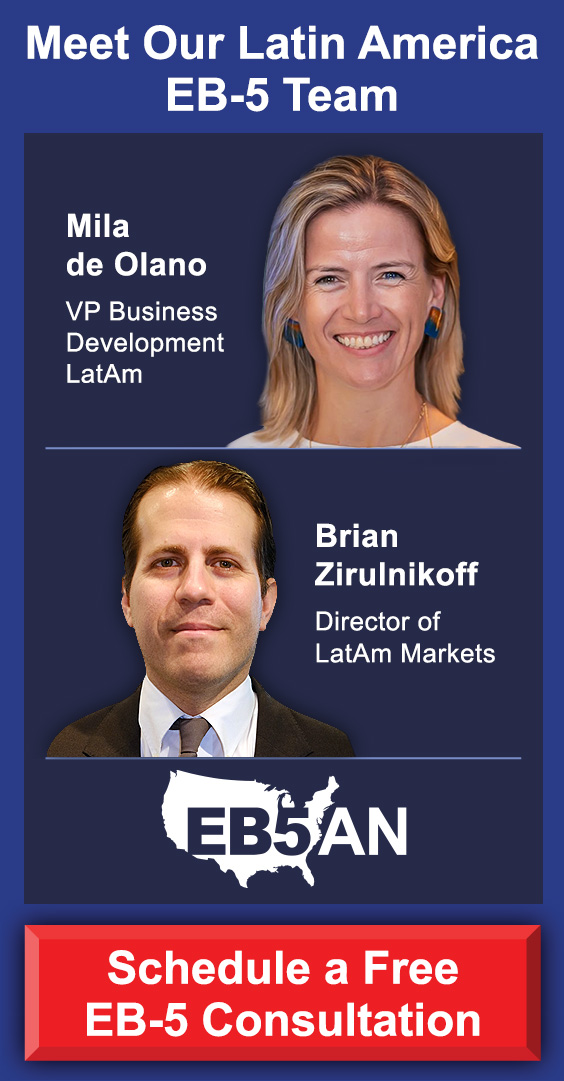Central to the EB-5 Immigrant Investor Program’s structure is the concept of targeted employment areas (TEAs), geographic regions that, if qualified, allow EB-5 participants to invest a reduced amount of capital. For investors evaluating EB-5 projects, understanding TEAs is not only helpful, it’s essential.
In this article, we will explain the details that come into play when investing in a TEA.
The Role of TEAs in the EB-5 Program
How TEAs Shape EB-5 Project Development
TEA Benefits
Due Diligence: What Investors Should Know
EB5AN Can Help You Invest in a TEA
The Role of TEAs in the EB-5 Program
The U.S. government introduced TEAs to direct EB-5 investments toward parts of the country most in need of economic stimulus. Under the current rules, the standard EB-5 investment amount is $1,050,000, but investments made in TEAs are eligible for a reduced threshold of $800,000. This reduction is designed to attract international capital into areas with either higher-than-average unemployment rates or rural characteristics.
There are two primary types of TEAs:
- High-unemployment areas, where the local unemployment rate is at least 150% of the national average.
- Rural areas, typically defined as regions outside of metropolitan statistical areas and cities or towns with populations over 20,000.
By incentivizing investment in these locations, the EB-5 program aims to ensure that the benefits of job creation and development reach beyond major urban centers.
How TEAs Shape EB-5 Project Development
TEAs do more than just reduce the required investment for EB-5 participants. They also influence how and where projects are structured from the outset. For developers and regional centers, securing TEA designation isn’t an afterthought; it’s a strategic priority that can shape everything from site selection to financing.
Because TEA designation allows a project to qualify for the lower $800,000 investment threshold, developers often conduct in-depth market and demographic analyses early in the planning phase to identify areas that meet the criteria.
This planning dynamic has led to a noticeable trend in the EB-5 market: the clustering of projects in areas that straddle the line between distressed and emerging. Think of transitional neighborhoods in large metropolitan areas or small towns just outside growing metro corridors. These locations can offer the best of both worlds: eligibility for TEA benefits and real potential for value appreciation.
From the investor’s perspective, this creates an interesting landscape. TEA projects aren’t confined to economically stagnant regions. In many cases, they are located in areas with significant infrastructure investment, new housing demand, or expanding commercial sectors, all of which can support both job creation and the eventual return of capital.
Understanding how TEA rules drive development decisions can help EB-5 investors interpret a project’s context more effectively. It also reinforces the importance of reviewing a project’s site selection rationale, local economic data, and job creation strategy as part of the due diligence process.
TEA Benefits
Lower Capital Requirement
For investors, the most visible benefit of investing in a TEA is the reduced capital requirement. The $800,000 threshold lowers the financial barrier to entry and often makes EB-5 participation more feasible for a broader group of applicants. However, the advantages go beyond cost.
Priority Processing
Under the EB-5 Reform and Integrity Act of 2022 (RIA), investments in rural TEAs qualify for priority processing, shortening the time it takes for an investor to receive a decision on their I-526E petition. This can be especially appealing for investors seeking faster movement toward conditional permanent residency.
Set-Aside Visas
The RIA also introduced a reserved quota for set-aside EB-5 visas, including those for rural and high-unemployment TEAs. Under this new structure, 20% of the annual EB-5 visa allocation is reserved for rural TEA investors, and 10% for urban TEA investors. This reform addressed the issue of visa retrogression—especially for investors from India and China—under the legacy “unreserved” category. When combined with the RIA’s concurrent filing provision, eligible investors can live, work, and travel lawfully in the U.S. even before their Green Cards are approved, which is an important benefit for those already in the country on non-immigrant visas.
Due Diligence: What Investors Should Know
Despite the benefits, investors must still approach TEA opportunities with caution. A lower investment amount does not necessarily mean lower risk, financially or from an immigration standpoint.
TEA Documentation
The first step is verifying that the TEA designation is legitimate and well-documented.
USCIS requires investors to include TEA documentation when filing their petitions. Investors should ensure that their chosen regional center or project sponsor can provide comprehensive and current data that supports the TEA claim.
Job Creation
Another key area of scrutiny is job creation. Each EB-5 investment must result in the creation of at least 10 full-time jobs for U.S. workers. In TEA projects affiliated with regional centers, job creation may be calculated using economic modeling, incorporating both direct and indirect employment impacts. Investors should confirm that the methodology used, such as RIMS II or IMPLAN, is credible and accepted by USCIS.
The Project Itself
Finally, the financial health and viability of the project itself must be evaluated. Investors should review offering documents, third-party due diligence reports, and financial projections.
Questions to ask include:
- Does the project have sufficient funding beyond EB-5 capital?
- What is the exit strategy for investors?
- What is the track record of the developer and regional center?
These questions are especially important in TEA projects, where the appeal of a lower investment threshold can sometimes overshadow concerns about long-term results or immigration outcomes.
EB5AN Can Help You Invest in a TEA
TEAs remain a cornerstone of the EB-5 program, offering both financial and procedural advantages to foreign investors seeking U.S. residency. The reduced investment threshold, combined with set-aside visa quotas and priority processing for rural investments, makes TEA projects particularly attractive in today’s landscape.
However, TEA designation should be viewed as one component of a broader decision-making process. Investors must still weigh economic viability, job creation projections, and immigration risks before committing capital. With proper due diligence and professional guidance, TEA investments can offer a viable and strategic path to permanent residency in the United States.
At EB5AN, transparency is of the utmost importance to us. EB5AN has helped more than 2,700 families from 70+ countries become lawful permanent residents of the United States. Our team has more than a decade of experience and offers clients first-rate, low-risk EB-5 regional center projects with a 100% USCIS project approval rate.
If you would like to know more about your EB-5 investment options, book a free call with our expert team today.











